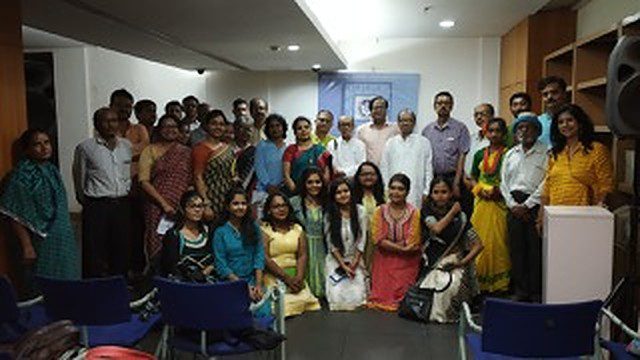Archana takes a hard look at the grim world of bonded labourers. Walk Free Foundation (2013) ranks India to be number one country with the largest number of bonded labourers. Indebtedness is one of the prime reasons of labour bondage. Breman (2010) brings forth that the proportion of the workforce that is trapped into indebtedness is nearly 10 per cent of the total population working in the unorganised sector. This is close to 50 million people. Here’s a special feature on Bonded Labour by Different Truths in association with PVCHR.
Bonded labour system is an age old exploitative practice of human slavery. However, in the contemporary world, with newer social and economic systems, its forms are changing. It is the worst type of human rights violation and contemporary form of slavery. It is violation of Right to Life, Right to Equality, and Right to Individual Dignity, among many others. Though mostly seen in agricultural setting, bonded labourers are also found in varied forms of non-agricultural activities like stone quarries, brick kilns, sex workers, fishermen, forest labourers, bidi workers, carpet makers, weavers, head loaders and children in match and firework factories, among others.
A look at the magnitude of the bonded labourers in India would indicate the gravity of the issue. The Gandhi Peace Foundation and the National Labour Institute conducted an exhaustive survey on bonded labourers in 10 states, in 1978-79. The survey is more than 35 years old and at that time, the estimated number of bonded labourers in the agricultural sector was 2.62 million. A more recent Report by The United States Trafficking in Persons (2013) assesses that the numbers of those in coercive labour due to debt bondage range between 20 and 65 million. Likewise, the Walk Free Foundation (2013) ranks India to be number one country with the largest number of bonded labourers, which is estimated to be between 13,300,000 and 14,700,000 people enslaved. Indebtedness is one of the prime reasons of labour bondage. In this regard, Breman (2010) brings forth that the proportion of the workforce that is trapped into indebtedness is nearly 10 per cent of the total population working in unorganised sector. This is close to 50 million people.
Bonded labour system is a stark reality in India. Let us have a look at their vulnerability aspects, which are delineated as follows:
Characteristics of Informal Workforce: More than 93 per cent of India’s labour force is in the informal or unorganised sector, which is characterised by low pay, no job security and largely unshielded by protective social legislations and labour unions. Bonded labourers, though a small proportion of this informal work force, are the most deprived and exploited lot. They are landless and asset-less. They are voiceless and passive in the socio-political milieu. They bear the brunt of impoverishment the most.
Drivers of Marginalisation: More often than not, bonded labourers are illiterate and ignorant. They belong to lower caste and are discriminated, exploited and marginalized. Due to illiteracy and ignorance, a bonded labourer is hardly aware of the loan amount and the interest rates. The employer takes advantage of poor labourer’s ignorance and illiteracy to forge the loan papers. So, even if a meager amount is taken as loan, a bonded labourer exhausts his/her entire life to repay the same.
Intergenerational Bondage: Another peculiar aspect of labour bondage is its intergenerational character. Especially, the traditional forms of bonded labour system, mostly seen in agriculture, entail many generations of the same family being bonded to the same household. Further, several bonded labourers had been working with their entire families, though not intergenerational, the employer-labourer relationship is exploitative enough to be termed as labour bondage. This newer form of bondage is of shorter duration.
Vicious Cycle of Poverty and Bondage: In the dire need of money, a poor Dalit has no other option but to take loan from the moneylender, who is often the upper caste rich. To repay the loan amount, he starts working with his wife and children for the moneylender/employer either in his agricultural fields or at his brick kiln. The labourer is unaware of the modalities of loan and interest he is supposed to pay. With heavy deductions from his earnings, he hardly gets enough to sustain his family, what to say of building assets or saving for the rainy day. Before he could repay the loan, one more expenditure, either illness of family member or marriage of daughter/sister, turns up and the indigent has to beg again for  another loan amount to his employer. This vicious cycle continues to prevent him coming out of shackles of poverty and indebtedness.
another loan amount to his employer. This vicious cycle continues to prevent him coming out of shackles of poverty and indebtedness.
Newer forms of Bondage more Exploitative: It may be noted that though the traditional form of labour bondage has been long lasting and for generations together, there was an element of patronage in it, which ensured some degree of social protection for the labourers. Traditionally, the employers, though exploited their bonded labourers, but ensured that they do not die for want of food. Employers would secure basic minimum survival needs of their bonded labourers. On the other hand, the newer forms of bondage lack the patronage aspect but retain the exploitative nature. The employer, today, is unconcerned and does not intervene even of the bonded labourer is in the state of complete destitution or even dying of starvation. It is in many ways, the worst of both the worlds, of feudal and capitalist relations.
Structural Factors Marginalize Further: Bonded labourers are invariably from lower caste groups commonly termed as Dalits. Among other forms of exploitation, they suffer from caste based discrimination, and accordingly, have limited access to common civic amenities, resources and opportunities. These structural inequalities create multiple vulnerabilities and deprivations among the bonded labourers. In fact, the unjust social milieu and labour bondage supplement each other. Characterized by extreme poverty, landlessness, assetlessness, and with little access to formal credit, India’s poorest and most marginalised groups and communities get trapped into labour bondage.
Indifferent State: India enacted a strong and progressive legislation – Bonded Labour System Abolition Act (BLA) – outlawing bonded labour in 1976, which provides for the discharge of all debt obligations of bonded workers and their rehabilitation, as well as punishments for employers. However, like many other legislations, BLA too has been emasculated by a corrupt and apathetic bureaucracy. Governments continue to deny the existence of bonded labour system and hardly any employers of bonded labourers have been punished till date. Furthermore, the law has fallen short to challenge the facilitating factors that make the bondage possible and thereby remained unsuccessful in its preventive role. Consequently, plight of labour bondage, far from being obsolete, continue to exist, even thrive, in nearly all parts of India and in multiple industries.
Seemingly, bonded labour system is characterised by gross violations of protective social legislations and policies. Some of the illustrations of violations of rights of victims of bonded labour system may be given. For instance, the provision contained in Article 23 of the Constitution prohibits all forms of forced labour including beggary, even if that forced work is remunerated. The interpretations of Article 23 assert that even though the worker enters voluntarily in the contractual agreement, any coercion for labour would be violation of his/her right.
Similarly, the National Policy of Children, 2013, declares that all children from 0 to 18 years need to be protected and provided with all the facilities of health, education, nutrition and protection. And the child labour in bondage is the gruesome violation of assertions of this policy. In the same way, under the Right to Education Act, 2009, it is responsibility of the government school located near to the brick kiln area and also government school in their hometown to enrolled these migrant children. In reality, no school teacher has ever been seen in the brick kiln under ‘enrolment drive’ to enroll children, which is his/her legal obligation.
Further, trafficking of children (half of whom are between 11 to 14 years of age) and women is a plague of the poor. In bonded labour system, trafficked children and women are subjected to physical and sexual abuse and treated as slaves. This is sheer violation of the Immoral Traffic (Prevention) Act, 1956.
Indian State has been a responsive welfare-state as it has enacted numerous legislations for the welfare and protection of interests of workers in unorganised sector. Apart from exclusive law against all forms of labour bondage (Bonded Labour Abolition Act), there are several legislations that directly and indirectly regularise and set norms for the work environment to be conducive for the informal workforce. These labour laws, when applied, ensure that no worker is exploited on grounds of gender, caste, region, religion, etc. The scope of most of these laws is wide enough to cover settings like brick kilns, carpet industries, where labour bondage can be located.
In fact, in 1984, Department of Labour, Government of India, held a tripartite meeting where all the labour laws were reviewed in the context of their application in brick kilns. Some of the salient deliberations of the tripartite meeting were – brick kilns come under the technical definition of ‘factory’ [Factories Act, 1948]; brick kiln workers are entitled to Gratuity [Payment of Gratuity Act] and other bonus and benefits from time to time [Payment of Bonus Act]; labourers at brick kilns are also entitled to Provident Fund, family pension fund, if they have rendered 60 days of work within a total employment period of 90 days [Employment Provident Fund and Miscellaneous Provisions Act]; employment in brick kilns has been notified as a scheduled employment and the employer is bound to pay minimum rates of wages (both daily and piece rate) based on the government notifications [Minimum Wages Act]; women workers at brick kilns are entitled for equal wages as their male counterparts [Equal Remuneration Act 1976]; and provisions for stipulated period of leave with pay after delivery of child, then additional break time between work for feeding the newborn and crèche facility for children are recommended for women [Maternity Benefit Act, 1961].
One may wonder, after enactment of such labour laws, how can labour bondage or exploitative labour practices exist. In reality, there have been blatant violations of these labour laws at the sites of bonded labour prevalence. At brick kilns, women’s labour is concealed, not shown on papers so that the employer is not bound legally to provisions under certain Acts discussed above. Additionally, since their work is not recognised, they are ‘officially’ not paid any wages. Even the basic conditions of labour-contracts are often flaunted by the kiln owners so that no provident funds, gratuity, and other benefits are paid to the workers. Further, upper caste owners’ ‘connections’ with police, bureaucrats and politicians, pay dividends in terms of protection from legal action for violating laws. Thus, even strong laws like Bonded Labour Abolition Act remain paper tiger and owners and perpetrators exercise oppressive labour bondage in an unruly way for their profits.
On this International Labour Day, it becomes our duty to take concrete steps to curb this gruesome exploitation on our fellow-beings. People’s Vigilance Committee on Human Rights (PVCHR) has done exemplary work of rescue and rehabilitation of bonded labourers in Varanasi. With unflinching courage and consistency this civil society organization has created awareness against this social evil, conscientised the exploited victims of labour bondage, did administrative advocacy through mass filing of RTI, actively participated in the rescue operations of bonded labourers and then suitably facilitated their rehabilitation. Breaking the nexus of upper caste employers, police and government officials was the most knotty issue and even led to death threats received by the PVCHR workers and volunteers. For legal interventions,  Uttar Pradesh State Human Rights Commission and National Human Rights Commission were roped in. PVCHR held workshops for employees and volunteers to be trained in modalities of filing complaints against human rights violations of workers in bondage like filling in standard complaint formats, online filing of complaints, providing referral services to victims and networking for different support systems for rescue, release and rehabilitation of bonded labourers. Even in sporadic cases sting operations against the perpetrator-employers were done. Urgent Appeals to Forum Asia, Amnesty International were filed and UN Rapporteurs and other UN agencies were informed about the incidences of human slavery in India. Local and national media in advocating for the abolition of bonded labour system were involved.
Uttar Pradesh State Human Rights Commission and National Human Rights Commission were roped in. PVCHR held workshops for employees and volunteers to be trained in modalities of filing complaints against human rights violations of workers in bondage like filling in standard complaint formats, online filing of complaints, providing referral services to victims and networking for different support systems for rescue, release and rehabilitation of bonded labourers. Even in sporadic cases sting operations against the perpetrator-employers were done. Urgent Appeals to Forum Asia, Amnesty International were filed and UN Rapporteurs and other UN agencies were informed about the incidences of human slavery in India. Local and national media in advocating for the abolition of bonded labour system were involved.
With all these rigorous efforts, within a span of two years, PVCHR was able to rescue and release 243 bonded labourers, which in itself is a huge success. Freed bonded labourers with PVCHR’s interventions were issued ‘‘Release Certificate’ and financial assistance of Rs.3000/- was provided. After receiving release certificate from the ADM (administration) Varanasi, Siddiquillah, a bonded labourer, took a long breath of relief and uttered, “Now, I will not die as a bonded labour….”
References:
Gandhi Peace Foundation and National Labour Institute. 1979. National survey on the incidence of bonded labour: Preliminary Report, New Delhi: National Labour Institute.
Kaushik, Archana and Nagvanshi, Shruti. 2016. From margins to centre-stage: A case of Dalit Empowerment in India. London: Frontpage Publications.
United States Trafficking in Persons (2013) cited in Mander, Harsh. 2014. India Exclusion Report 2013-14. Centre for Equity Studies. New Delhi: Books for Change.
Walk Free Foundation. 2013. Global Slavery Index 2013, http://globalslaveryindex.org/report (accessed 10 May 2014), p.7.






 By
By

